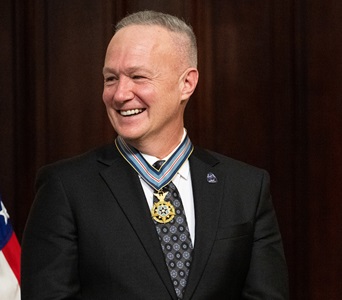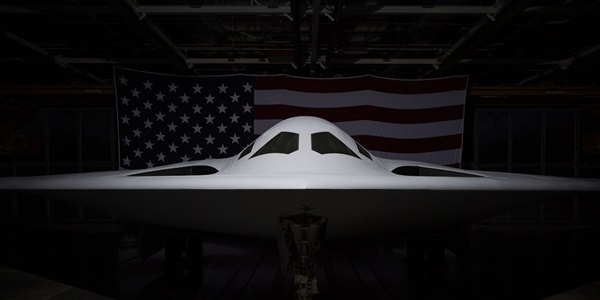The Women of Artemis

By Kendra Kastelan
Named after the twin sister of Apollo in Greek mythology, NASA’s Artemis puts the work of women at the forefront. The program is focused on establishing a sustainable human presence in deep space, including ultimately landing the first woman on the Moon. Here at Northrop Grumman, women are leading the way to help achieve this history-making first.
The inaugural mission, Artemis I, completed a successful 25-day mission in fall 2022 after the Space Launch System (SLS) rocket launched the uncrewed Orion spacecraft around the Moon, farther than any human-rated spacecraft has gone before. In 2024, Artemis II will take a crew on a similar route to Artemis I, and Artemis III will land astronauts on the Moon for the first time since 1972 — not only the first female astronaut, but also the first person of color.
While women have played pivotal roles in space exploration efforts here in the U.S. for more than 60 years, barriers remained that kept many out of leadership positions until recent decades.
“I’ve seen the industry change over time,” said Sally Richardson, Habitation and Logistics Outpost (HALO) program director at Northrop Grumman. “Women have a seat at the table now, in senior positions here and at NASA, and when we get the first woman to the Moon, it is women in these leadership roles who will make it happen.”

Launching Into History
With a background in physics, Sally joined Northrop Grumman over 30 years ago and now leads the development of humanity’s first space station in lunar orbit.
“I remember watching the first lunar landing and seeing Buzz and Neil walk on the Moon, and that’s what motivated me to join aerospace,” said Sally. “And later, astronaut Sally Ride became a great inspiration to me.”
She said she encourages young women to open their minds to the possibilities that a STEM education brings, as the space industry needs diverse ideas. Recent reports by the American Society for Engineering Education show women continue to make up less than 25% of the total fall enrollment in undergraduate engineering programs.
“The graduating classes in engineering and the sciences are not 50% female or persons of color,” said Jill Eskew, Northrop Grumman program manager for the SLS boosters. “With Artemis, our nation’s youth can begin to see themselves in the astronauts and workforce supporting these incredible missions that benefit all of humankind.”
Jill started with Northrop Grumman heritage companies over 36 years ago, and today she plays an essential role in the SLS booster program, co-located with NASA’s Marshall Spaceflight Center in Huntsville, Alabama. Northrop Grumman provides the twin solid rocket boosters for the SLS rocket, which each produce 3.6 million pounds of thrust at launch and are vital to getting the massive SLS rocket out of earth’s atmosphere.
“I love the excitement I see when speaking to young people,” said Jill. “Artemis’ astronaut crews are going to be a true representation of our population. The missions are bold and are inspiring a new generation.”
Sending Safely
Erica Sandoval, abort motor program manager at Northrop Grumman, discovered engineering through fashion. Enjoying putting clothes together, Erica was looking for similar ways to think critically and found her skills to be applicable to STEM-related fields. She started at the company over 20 years ago as a quality engineer and now leads a major system crucial to Artemis astronaut safety.
“It’s ironic,” said Erica. “We don’t want our product [the abort motor] to be used, but it’s an incredible system that is necessary as we look to make human exploration of the Moon and Mars a reality.”
The abort motor is one of three solid rocket motors that compose the Orion spacecraft Launch Abort System, an escape system that safely removes the crew capsule from the SLS rocket in the event of an emergency on pad or during ascent.
“There weren’t many women in engineering school; we all had male role models that inspired and encouraged us,” said Erica. “It is incredibly humbling to lead a team that’s a small part of something that changes what’s possible for humanity.”
Learn more about Northrop Grumman’s work on NASA’s Artemis program, and our commitment to solving the toughest problems in space.


